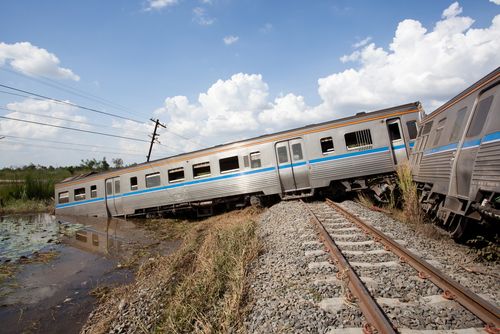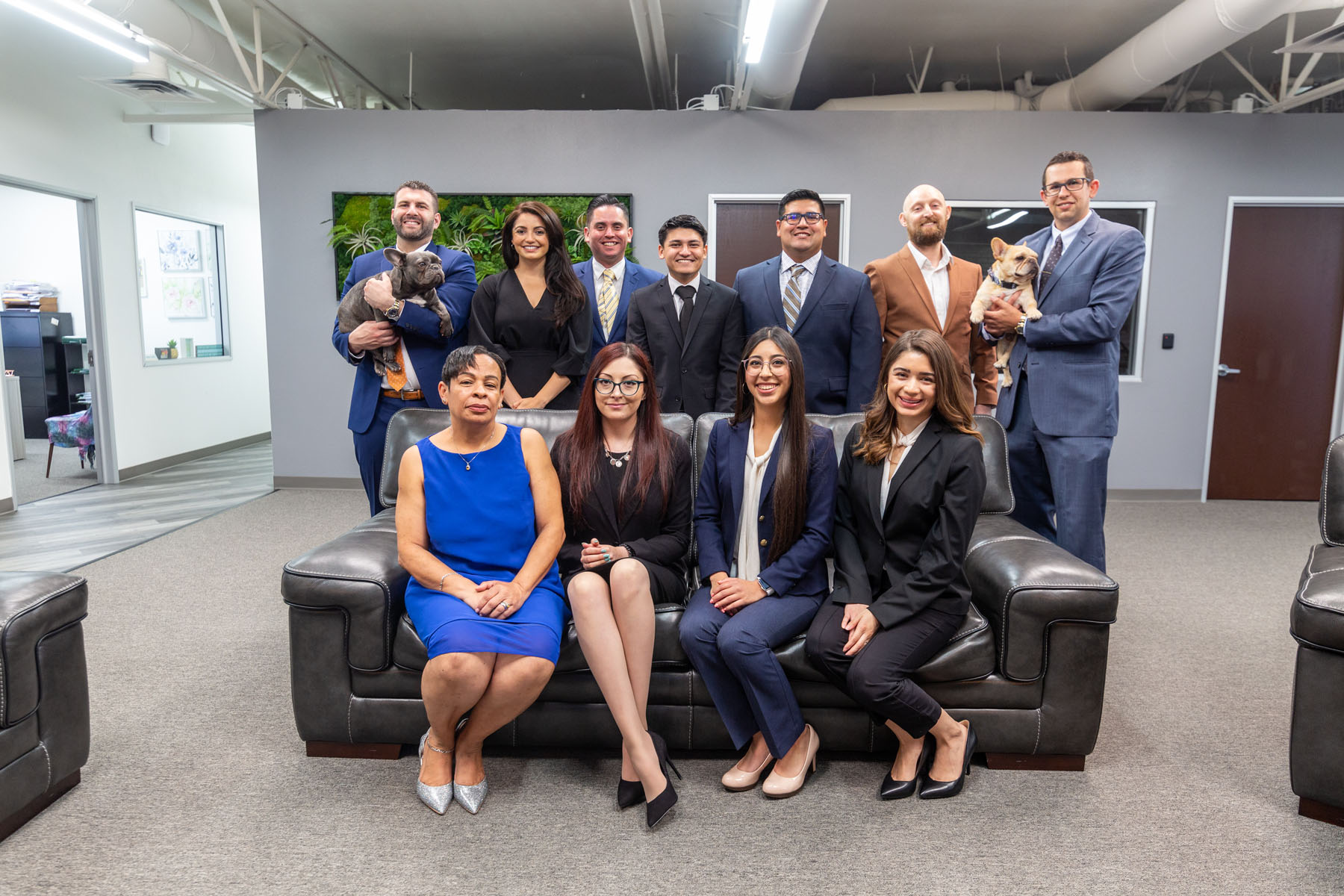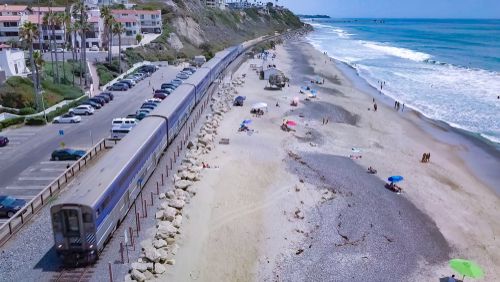In the past, train travel was considered the most romantic mode of transportation. Today, the growing number of train accidents, injuries, and deaths have taken the romance out of the railways.
Train accidents probably happen a lot more often than you realize, especially in San Diego. They aren’t as common as car or truck accidents, but they still happen far too frequently. When they do, they often result in serious injuries or death.

What Is a Train Accident?
One way that train accidents happen is when a train filled with passengers collides with another vehicle. The other vehicle might be another train that is also filled with passengers. It could also be a car or truck. The large number of passengers on-board the train means that even a minor crash can cause multiple serious injuries.
Another cause of train accidents is a derailment. When a train comes off the track, it can cause some of the most devastating crashes resulting in large numbers of injuries. Trains don’t just derail for no reason. It’s when someone fails to follow the safety standards, or they are careless about keeping the railway system safe. For example:
- Loading the train with excessive cargo weight
- Placing or failing to remove obstacles or obstructions from the train tracks
- Equipment that isn’t properly maintained or is faulty
- Broken or faulty railroad tracks
- Speeding
Increasingly, train accidents in San Diego are train Vs pedestrian. The Federal Railroad Administration (FRA) ranked San Diego as the topmost dangerous county in the nation for fatal accidents between trains and pedestrians. Sometimes trains strike pedestrians when they fall onto the tracks. Or, they might be crossing the tracks and fail to see or hear it when a defective signal or gate doesn’t warn them.
Railroad crossings are especially dangerous because this is where the road and train tracks meet. A train that weighs hundreds of tons that is traveling at high speeds doesn’t come to a stop when it hits a vehicle like another vehicle would. There are usually fewer casualties because the collision involves a single passenger vehicle. At the same time, there are more many more fatalities due to the force of the train on the passenger vehicle.
Causes of Railroad Crossing Accidents
- Defective warning signals or gates – We all know what a working railroad crossing signal looks like. The gates lower to prevent you from driving onto the tracks, lights flash to get your attention, and there are alarms that sound. When none of these things happen, you assume the crossing is clear. When a malfunctioning signal fails to alert you to an oncoming train, it can lead to an accident.
- No warning signals are installed. Not all railroad crosses have signals, so it’s up to the driver to take the necessary precautions. Each state has laws regarding the types of vehicles that must stop at crossings and the distance from the tracks where they must stop. In California, the law is specific about stopping for railroad crossings with gates, warning signals, or a flagman. However, it is up to drivers to be vigilant about crossing safely where there are no warning signals or only stop signs.
- Improper sight lines for vehicles. Ideally, drivers or pedestrians should have a clear view of an oncoming train. If anything blocks their sightline, it can lead to a crash.
- The train fails to signal. Trains should signal when approaching a crossing to let vehicles and pedestrians know to be cautious.
- Train operator error. Train operators make many of the same mistakes that car drivers do. They might not be paying attention, driving distracted, or speeding.
- Defects in the train. If not properly maintained, the train’s brakes might fail, or a defect in the engine might prevent the train from slowing down at the crossing.
- Defects in the tracks. Defects in the track that occur from normal wear and tear can lead to dangerous train derailments. When these happen at crossings, the potential for damages and injuries is much greater.
- Obstacles or obstructions on the tracks. Wild or domesticated animals, stalled motor vehicles, and fallen trees are just some of the things that end up on railroad tracks. Anything that gets in the path of the train can lead to a train accident.
Who Is Liable for a Train Accident?
Determining liability is the first step in a personal injury case. Depending on how the accident occurred, it might be the train operator, the railroad company, or whoever was responsible for maintaining the train. In some cases, more than one party is liable for the accident. The best way to determine liability is by talking with an experienced personal injury attorney.
A personal injury attorney will help you determine whose negligence or acts led to the train accident that caused your injury. The railroad company has a responsibility to provide employees with a safe working environment and the right equipment for the job. They must give the proper training according to the FRAs safety regulations and keep all of the equipment maintained. If they failed to uphold their responsibility and it led to the crash, those parties can be held liable for the crash and for the compensation you need for your damages and injuries.
Proving liability in train accidents can be difficult. Although the railroad company might be negligent in their duty, it isn’t uncommon for them to try to cover their role in the negligence that led to the accident.
Sometimes multiple parties have ownership in the train, the tracks, and the maintenance to each. The manufacturer of the train might be liable if a defective part caused the accident. You need an attorney who understands the complexities of investigating and proving this type of case. It might require you to file a claim against multiple parties.
When a Train Accident Injury Becomes a Wrongful Death
The high number of fatalities that result from train accidents lead to many cases of wrongful death. A wrongful death is when a person’s personal injuries are so severe they cause death. If they had lived, they would have had a valid personal injury claim against another party.
Losing someone close to you because of a serious accident is difficult on many levels. It’s challenging to make sense of how the accident occurred. You might be looking for answers while trying to deal with the pain and grief of your loss. A personal injury attorney can help you find the answers you need to move forward.
Taking legal action after a wrongful death can help you accomplish several important things. It can help you get the compensation you deserve to replace your loved one’s income. It can also clear their name and point the finger at the guilty party. Grieving your loss is hard enough. You don’t need to worry about the expenses your loss has left behind. Let a personal injury attorney look at your case and take care of gathering evidence and filing the paperwork. We’ll help you take the time you need to grieve.

Protecting Yourself from Train Accidents
People who live around railroad tracks might think of them as part of the scenery. They might find them a convenient way to walk back and forth between different areas. But walking along railroad tracks is considered trespassing, and it’s illegal. It’s also trespassing when you take a bike ride or hike down the railroad tracks.
Some people take railroad crossing signals for granted. They don’t really look for warning signs and signals to make sure it’s safe to cross the tracks. Instead of assuming it’s safe to cross, always assume that a train is coming.
Even more dangerous is trying to “beat” the train by driving around lowered gates. The gates and signals are “triggered” by the train’s position on the tracks. It’s always a risk to try and outrun a train whether you’re on foot, in a car, or on a bike. It isn’t worth risking your life to get across the tracks a few minutes faster.
Accidents involving big rigs and semis are also increasing, and they cause serious injuries for some of the same reasons as train accidents. One thing drivers need to realize is that any large, fast vehicle can’t stop quickly.
Freight trains traveling 55mph take a mile or longer to stop. If you run in front of them, they can’t stop in time to keep from hitting you. Always give the train the right of way.
Never stop on the train tracks for any reason. If there’s traffic in front of you when you’re crossing, wait until there’s enough room on the other side before you pull ahead. There should always be a minimum of 15 feet between the end of your vehicle and the tracks when you stop. If your vehicle should happen to stall on the tracks, get everyone out immediately and stand away from the tracks. Call the emergency number posted near the crossing or call 911. You never know when the next train might come through. Remember, a speeding train can’t stop quickly, even if the train operator spots the train on the tracks.
In California, some vehicles are required to come to a full stop at railroad crossings. These include buses carrying passengers, motor trucks transporting employees, vehicles carrying flammable materials, school buses, commercial motor vehicles, carrying chlorine or those requiring markings or placards according to federal regulations. Also, cargo tank motor vehicles transporting a commodity that had a temperature above its flashpoint at the time of its loading, and cargo tankers are required to stop less than 50 feet but more than 15 feet from the nearest rail.
Recognizing all these vehicles on the spot can be challenging if not impossible. Keeping a safe distance behind any vehicle and giving it adequate time to stop will help keep you safe every time you cross a railroad crossing.
As a pedestrian, don’t take a dare or decide to live out the stunts in your favorite movies. Jumping on a moving train is a carefully planned stunt in the movies. It’s an invitation to a serious injury or even death if you try it in real life.
What to Do If You Are Injured in a Train Accident
Even a seemingly minor train accident can be devastating. Make sure you or someone else calls for emergency care to the scene. If you have injuries, get medical treatment right away. If your injuries seem minor at the time, or you don’t think you are injured, but they appear or worsen over time, go to your healthcare provider. Get a thorough examination and make sure they keep a detailed record.
Tell your doctor how your injuries have impacted your life, especially any limitations they’ve caused since the train accident.
Contact a personal injury attorney as soon as you realize you’re injured. It’s essential to have dependable representation for your claim. If you file a claim against the railroad company, you can expect to go up an entire legal team. They will take every opportunity to disprove your case, so they don’t have to pay you.
Don’t wait to hire a personal injury to protect your rights. You only have a certain amount of time after the train accident to file your claim. The sooner you start, the more time your attorney will have to build your case and fight with your best interests in mind. That means getting the most compensation for your injuries and damages.
Why You Should Call Batta Fulkerson
There are two things to look for when hiring a personal injury lawyer: Experience and success rates. Our firm has 108 years of combined experience and more than $119 million in recovery for our clients.
We understand the impact that a serious injury or wrongful death has on your life. We know how to deal with insurance companies and attorneys who will stop at nothing to defend their clients. Contact us today and schedule a free consultation. Let us evaluate your train accident injuries and help you get the compensation you deserve. There’s never any financial burden to hiring our firm to represent you. You don’t pay anything until we win.




